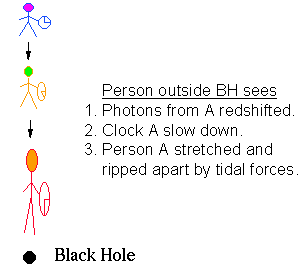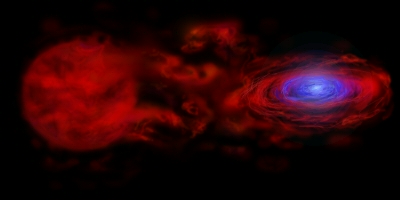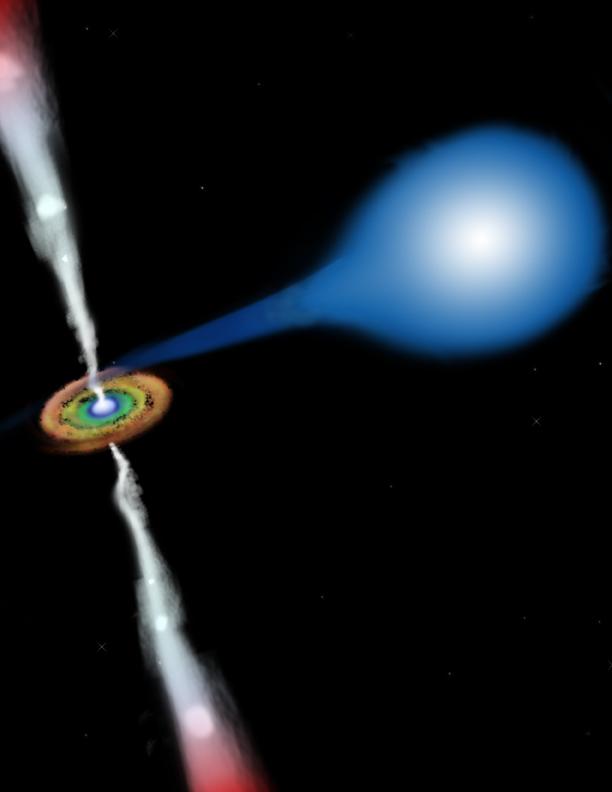More on Black Holes
|
Falling into a Black Hole Should you be unfortunate (foolish) enough to enter a black hole your demise would be nearly instantaneous in your reference frame. You'd be pulled apart by intense tidal forces, then you'd be crushed as you become part of the singularity at the center of the black hole. Things would appear different to a distant observer. The clock you carried would move slower as you approach the Schwarzschild radius and the distant observer would be denied the thrill of actually seeing you disappear into the black hole because time "stops" at the event horizon. To take a Virtual Trip into a black hole, go to THIS site. |

|
|
Finding Black Holes: Wobbling Stars Sometimes astronomers find a star that behaves like it is part of a binary system, but they can't see its partner. How do they find only one partner of a binary system? The visible binary member would appear to wobble OR the star is a single-lined spectroscopic binary, just like a normal stellar binary system. The only problem is that there is no visible partner. |

|
 How do scientists tell whether the invisible partner is a white dwarf,
a neutron star, or a black hole?
They calculate its mass by watching the
movements of the partner. If the visible star holds a loose orbit,
perhaps the partner is only a white dwarf.
However, if the partner orbits
tightly, it could be moving around a black hole. Say the mass is measured
at greater than 5 solar masses.. This could be a binary system with a
black hole.
How do scientists tell whether the invisible partner is a white dwarf,
a neutron star, or a black hole?
They calculate its mass by watching the
movements of the partner. If the visible star holds a loose orbit,
perhaps the partner is only a white dwarf.
However, if the partner orbits
tightly, it could be moving around a black hole. Say the mass is measured
at greater than 5 solar masses.. This could be a binary system with a
black hole.

This invisible partner is probably not entirely invisible: it has an accretion disk which is very hot and seen in X-rays. The disk might also direct hot gas outward in a pair of powerful jets which emit detectable light.
Other Black Holes
By defintion, a black hole is simply an item of such density, its gravitational pull is greater than the speed of light. A Black hole does not have to be particularly massive! Some cosmology theories predict the existance of primordial black holes compressed during the formation of the universe. They have predicted masses ranging from a few grams to the size of a planet. See here
Supermassive Black Holes are seen at the center of galaxies. We'll soon learn about our Milky Way Galaxy's BH and how even more massive black holes manifest as quasars in distant galaxies next week in class.